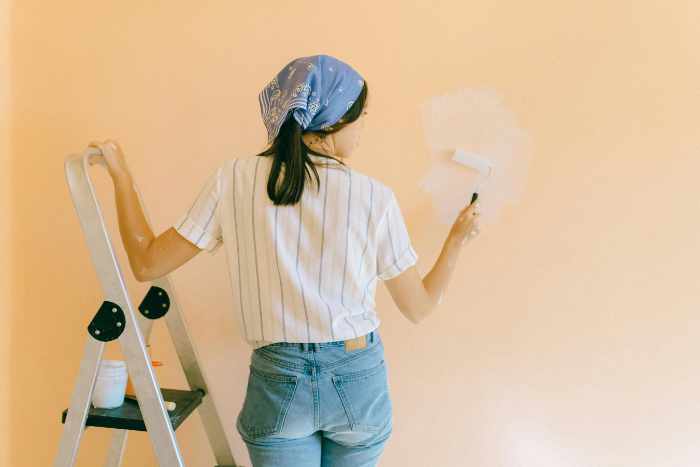When preparing to sell a home, choosing the perfect paint palette is one of the most crucial decisions. Colors have a profound effect on a buyer’s first impression, and choosing the perfect shades can significantly increase the appeal of your property. A well-thought-out paint scheme creates a cohesive atmosphere, highlights the best features of your home, and can even influence a buyer’s emotional connection to the space. In this article, we’ll explore how to select the ideal paint colors to make your home stand out in a competitive real estate market.

Choosing the Perfect Paint Palette
There is such a thing as color psychology. It helps us understand how we as humans understand color.
1. Understanding the Power of Neutrals
When selling your home, opting for a neutral color palette is often the safest and most effective choice. Neutrals like beige, gray, soft white and taupe provide a blank canvas for potential buyers, allowing them to envision their own furniture and personal style in the space. These colors also give off a sense of cleanliness, simplicity, and elegance, which can make rooms appear larger and more inviting.
In addition to making spaces feel more open, neutrals are less likely to evoke strong opinions. Buyers are more likely to respond favorably to neutral tones, as they don’t clash with most interior designs. If you’re preparing your home for sale, focusing on choosing the perfect paint palette means opting for a neutral backdrop, which could be the key to attracting a broader audience.
2. Accentuating Key Features with Contrast
While neutrals form the foundation of a strong paint palette, adding a touch of contrast in strategic places can draw attention to your home’s best features. A darker or bolder shade on an accent wall can create depth and interest in a living room, dining area, or bedroom. Contrast can also be used to highlight architectural elements like built-in shelves, fireplaces, or wainscoting. For example, pairing a light gray wall with a crisp white trim around windows and doors creates a sharp, polished look that feels modern yet timeless.
When considering contrast, balance is important. You want to use bolder colors sparingly so they enhance the space without overwhelming it. Deep blues, warm grays, and even soft greens are popular choices that convey calmness while still offering a stylish update. This strategy not only helps your home feel more distinctive but can also make certain areas seem more upscale and desirable to buyers.
3. Choosing the Right Outdoor Palette
The exterior of your home is the first thing buyers will notice, and choosing the perfect paint palette can dramatically improve curb appeal. Classic and elegant color combinations for the outside of your home are often what attract buyers driving through neighborhoods. Traditional combinations like white with black shutters, soft gray with white trim, or beige with a dark brown door have lasting appeal and are widely appreciated by prospective buyers. These color schemes create a polished and inviting look that can make your home stand out in a competitive market.
Choosing colors that complement your neighborhood can also be a smart move. While you want your home to be unique, it’s essential not to stray too far from the style of surrounding properties. A bold exterior color might put off potential buyers who find it jarring, while a tasteful, well-coordinated palette enhances the overall neighborhood aesthetic and adds value.
4. The Psychology of Color and Its Impact on Buyers
Color psychology plays a significant role in how buyers perceive a space. Soft, soothing shades like light blues, greens, and creamy off-whites are known to evoke feelings of calm and relaxation, making them ideal for bedrooms and bathrooms. On the other hand, warmer tones like sandy beige or light taupe can create a sense of coziness and comfort, which is perfect for living areas.
It’s also important to note that color can subconsciously affect how buyers evaluate the size and condition of a room. Lighter shades reflect more light, making spaces feel larger, while darker tones can make a room feel more intimate and cozy. Understanding how color influences perception can help you make strategic choices that improve a buyer’s experience during a walkthrough.
5. Aligning Your Paint Palette with Market Trends
To maximize your home’s appeal, it’s essential to stay informed about current color trends in the real estate market. Using color theory for a trendy home means giving people what they want.
Homes that incorporate modern, on-trend colors are often more appealing to younger buyers who prioritize style and design. Coastal blues, earthy greens, and soft pastel shades have been gaining popularity in many markets, offering a fresh and contemporary look without being too overwhelming.
As you embark on the journey of selling your home, it’s crucial to present it in its best possible light. One significant factor that can influence potential buyers is the color palette. By consulting with professionals, you can ensure that your paint choices align with current market trends and preferences. This is where Coastal Edge Homebuyers can be a valuable asset. Their expertise in home staging and market analysis will help you identify the most appealing colors to attract buyers. By implementing their recommendations, you’ll give your home the competitive edge it needs to sell quickly and for the best possible price.
6. Refreshing Interior Spaces for Maximum Appeal
Beyond simply choosing colors, the quality of the paint job itself is crucial. If you’re selling, a fresh coat of paint can make a world of difference in how your home is perceived. Worn, chipped, or outdated paint can give the impression that a home hasn’t been well-maintained, turning off potential buyers. On the other hand, a crisp, clean finish with modern colors suggests that your home is move-in ready.
Be sure to pay special attention to high-traffic areas such as the kitchen, living room, and bathrooms. These rooms are often the focal points of a home and receive the most scrutiny from buyers. A well-maintained paint job in these spaces can set the stage for a successful sale.
The Transformative Power of Paint
Choosing the perfect paint palette is one of the most affordable yet impactful steps you can take when preparing your home for sale. By sticking to neutrals, using contrast wisely, and staying on top of market trends, you can create an inviting and stylish environment that appeals to a wide range of buyers. Whether you’re sprucing up the interior or giving the exterior a much-needed facelift, a thoughtful approach to your home’s colors can be a game-changer in getting your property off the market quickly.



